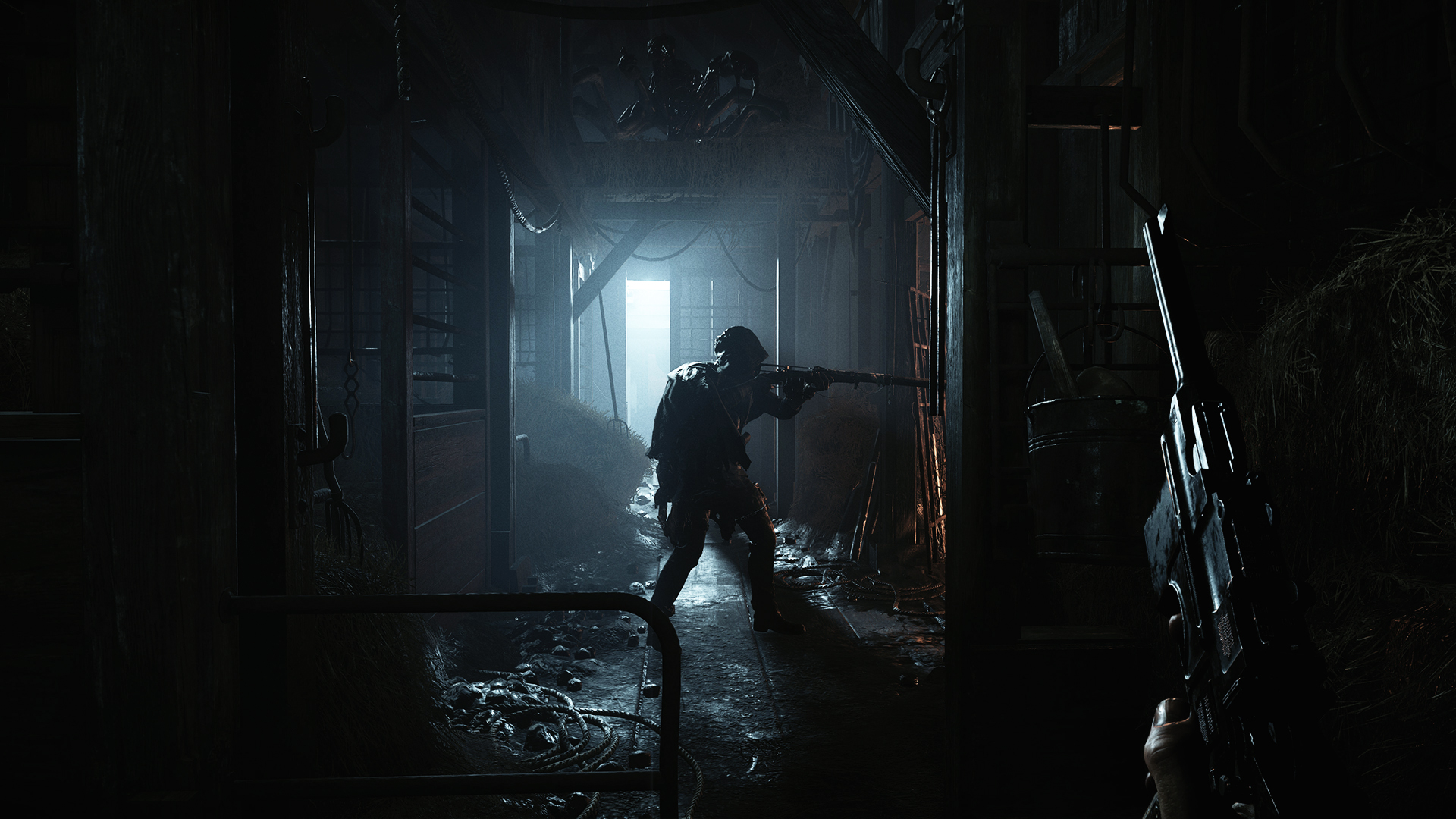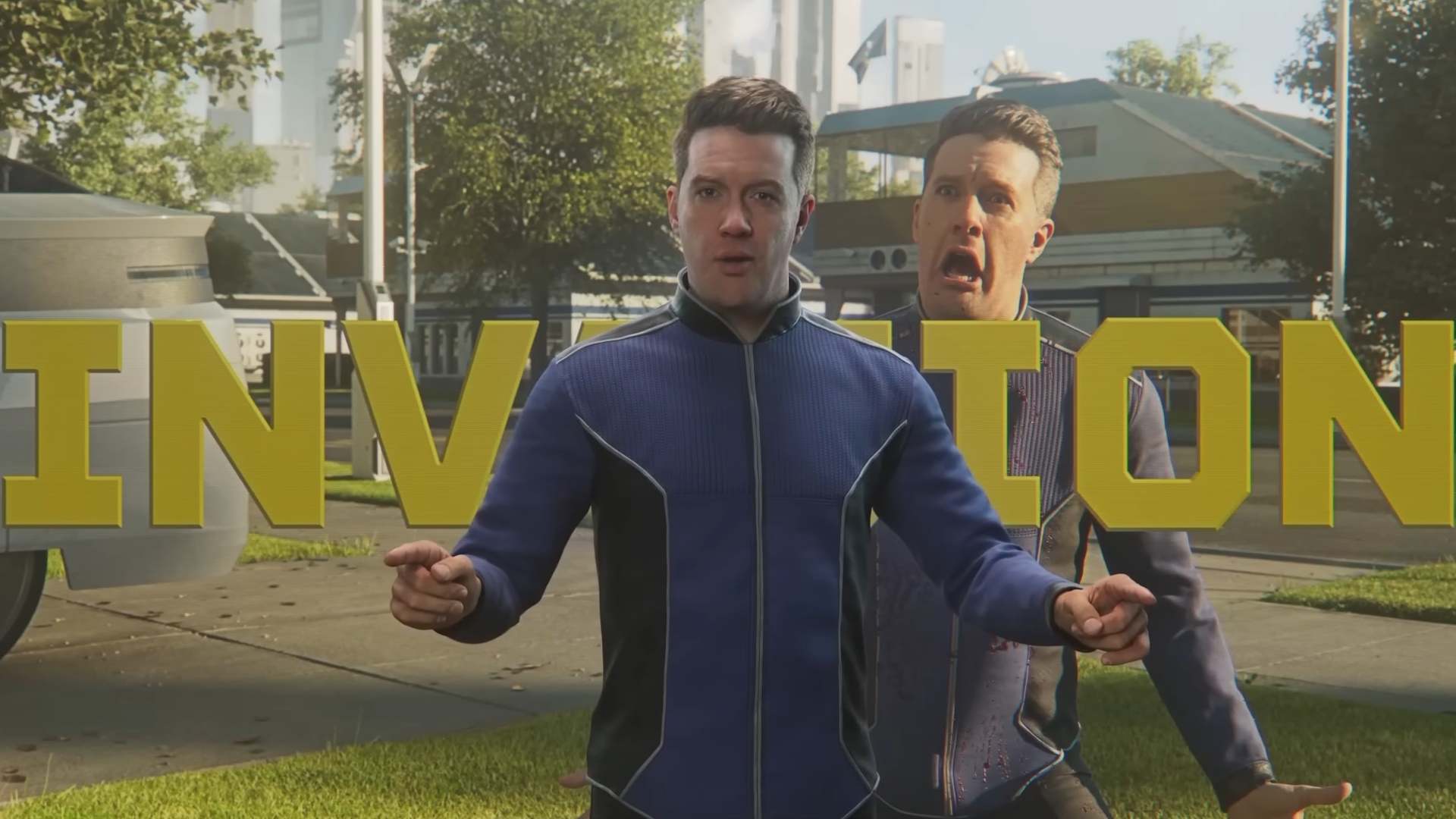Hunt: Showdown's design directors share their formula for live service success: "You have to be part of that experience"
Interview | Hunt's design directors talk about playing their own game, dealing with toxic feedback, and balancing the game's ever-expanding arsenal

For the last four years, I've been unashamedly addicted to a multiplayer extraction shooter called Hunt: Showdown. It's the game I've played the most hours of in my life so far – I surpassed 2,000 hours at the end of last year – and I may or may not have a piece of artwork from the game tattooed on my ribs. My blatant fandom and oversharing aside, it's an exciting time for anyone to be hooked on Crytek's first-person shooter.
Despite celebrating its sixth birthday back in February, Hunt is on the verge of receiving its biggest update since launch. A top-to-bottom engine upgrade, a new map, a new user interface, and a dedicated next-gen console port all arrive in August, alongside numerous long-awaited quality-of-life updates.
With all of that in mind, I recently sat down with the game's two design directors to ask them what their secret is: plenty of well-known franchises have attempted the live service model, and few have matched Hunt's longevity.
“An open dialog”

I wouldn't usually start an interview this way, but I quickly thank them for creating and maintaining a game that's had me hooked far longer than any other.
"I can totally sympathize," says Denis Schwarz, Hunt's design director since its inception, "it's the game I've played the most", he admits. He's joined by Scott Lussier, who previously worked on projects like Rogue Company and Smite, and was even a professional Halo player in another life.

Hunt: Showdown is the best game that you aren't playing right now
Scott quickly asks me how many hours I’ve played, and the pair validate my veteran Hunting status with respectful nods of approval. Later, they admit that they frequently ask that question to prospective new hires. The developers making this game are some of its biggest fans, which may be its greatest strength.
"I think the main ingredient here is you have to be part of that experience", argues Denis. "You can't just sit on the outside as a developer and say, 'oh, I guess we're gonna change this'. You have to live and breathe this… building that relationship and being at the pulse, understanding what people want from the game but also understanding yourself what you enjoy as a developer."
Sign up to the GamesRadar+ Newsletter
Weekly digests, tales from the communities you love, and more
That attitude doesn't exactly surprise me. When you first boot up Hunt: Showdown, a small blurb appears on the screen. Vivid, white text tells you that this game's developers are in an open dialogue with its players. It's a bold statement to make everyone aware that this is a game that belongs as much to the community that plays it as the team of developers who create it.
"You don't need to listen to everything people say and act on it", continues Schwarz, "but you need to listen to understand where they're coming from and I think that's the conversation piece that I hope we're getting right…"
" - And that starts from the very top-down too," Lussier interjects. "Our boss, David Fifield, has 3,000 hours in the game at this point. I play every day with him and if I leave it a couple of days he's like ‘What, you just not playing Hunt anymore?'"
Communication Leads to Community

Of course, rigorous playtesting is just one part of staying connected to a live service game. Communicating with the player base is one of the most important parts of that open dialog. As a long-term fan, I always enjoyed the developer live streams Crytek would host when an update was imminent. Denis and Bence, the social media manager, would scroll through pages of information about new weapons, level design changes, and whatever else the team had been cooking up.
Nowadays, those dev streams are few and far between, but Scott argues they’ve been swapped out for more streamlined forms of communication. “I'd say in our 1.14 and 1.15 patches when we were doing our developer insights, the shorter videos that were a little bit more concise and to the point… that did really well for us and I think that's kind of where we want to go moving forward", he thinks aloud.
But as a player, I've noticed that this change in communication has meant less use of the test server, something that ensured quality control throughout the first five years of the game's life.
"We don't want to use our players as Guinea Pigs, as beta testers for everything," Denis advocates. "We have invested a lot in our infrastructure in the background in terms of how we look at quality assurance, updates, play testing, etc. Which is just not that visible anymore because it's not running through the public domain, but it has become a lot more refined and less improvised than in Early Access", he assures.
Denis goes on to discuss the difficulty of trying to fix test server bugs while the update schedule is ongoing, especially when the narrative around the update becomes more about small annoyances than the exciting additions Crytek is making. I suggest that's perhaps a drawback to being as open and transparent as the team is about its live service offering, which is something that Denis promptly agrees with.
"The people who have been playing this game for a long time feel heard", he says. "I personally enjoy being that close to the people playing because it helps us make the game better".
Even if he livestreams the game on Twitch a few nights a week, it takes more than one fatherly figure to foster a community. Scott makes a point of crediting the team’s top-class community managers and the web of discord servers, comment sections, and forums they keep tabs on.
I’m a huge fan of Hunt’s streamers and YouTubers, so I jump on the opportunity to ask what Scott and Denis make of them, both as players and developers. "They are our evangelists… They do half the work for us!" Denis says, jokingly. Despite his jesting, the connection between Crytek and the game's streamers is easy to see. "We actually have a pretty awesome relationship with them," he says with a smile.
But like with any modern gaming community, it isn't always sunshine and rainbows. For every passionate player singing the game's praises, there are about five or six commenters under every social post demanding changes and "fixes".
"To me, I don't view things as positive or negative, I kinda just view it neutrally", Scott begins, "Even if it is the most toxic… to me, it's like, ok, what's the problem they're running into, and how can we solve that?"
A Balancing Act

The conversation begins to shift toward the ongoing challenges of balancing a PvP game. Denis brings up the recent example of solo players being able to self-revive, which has been a real talking point within the community.
"As long as the core of the game remains Hunt, I think that's the beauty of us being so close to the game," Denis says. "We live and breathe it, we understand it, we treasure [it] and we keep that safe. We can easily move around the peripherals and change things around so that it's the best experience it can be because of that feedback."
The tagline I've been running with is: Hunt's best days are ahead of it.
Scott Lussier - Design Director
Hunt’s gone through a slew of changes in recent years. Custom ammo has been adopted, game-changing event traits have come and gone, and drone-like beetles are even featured now. I ask Denis if he ever worries about adding something new that might ruin it all.
"Always," he admits with a laugh."It's one of the perils of being a game designer. The moment you bring out a feature you always worry - 'will this really work out, did we tick all the boxes?'”
"What we're trying to do is make the best version of Hunt possible," Scott says. "There's always going to be competition in the live service field, and you have some juggernauts inside of there. For us it's, how do we make Hunt the best version it can be in this update, and then the next one, and then, how do we make sure Hunt is still here in ten years? The tagline I've been running with is: Hunt's best days are ahead of it".
Comparison is the thief of joy

Speaking of the competition, I bring up Helldivers 2 and its shared community progression. Hunt's fourth boss target was unlocked during a live event where players had to band together to earn a huge point total - a bit like a Major Order for Super Earth's finest. Based on the success of Helldivers this year, I ask if that's something Crytek would explore again.
"I think TBD", says Scott. "We're opportunists, is how I would put that."
"We also don't want any of that to feel tacked-on", adds Denis. "If you want to do it, do it right. Kudos to the Helldivers team - they've designed their game with that in mind… it's been part of their strategy from the beginning… but you just can't tack that onto any other game."
Hunt now has an impressive roster of legendary hunters with a diverse range of cultural backgrounds. One even has Vitiligo, which is a lovely piece of representation. At the end of our conversation, my roots take over, and I ask when we'll be getting a Scottish Highlander in the bayou. Scott laughs, notes that in every live service game he's worked on he's created a Scottish character, and then leaves me with a promising "Who knows?"
Hunt: Showdown is available now on PC, PS4/5, and Xbox One/Series X and S. Its engine upgrade and dedicated next-gen port arrive on August 15.
One of my earliest memories is playing SuperMario64 and wondering why the controller I held had three grips, but I only had two hands. Ever since I've been in love with video games and their technology. After graduating from Edinburgh Napier University with a degree in Journalism, I contributed to the Scottish Games Network and completed an Editorial Internship at Expert Reviews. Over the last decade, I’ve been managing my own YouTube channel about my love of games too. These days, I'm one of the resident hardware nerds at GamesRadar+, and I take the lead on our coverage of gaming PCs, VR, controllers, gaming chairs, and content creation gear. Now, I better stop myself here before I get talking about my favourite games like HUNT: Showdown, Dishonored, and Towerfall Ascension. Location: UK Remote




